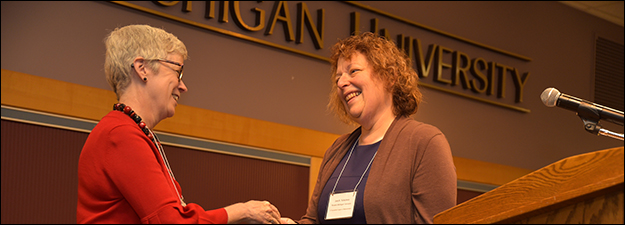Assembling Arthur (A Roundtable)
Sponsoring Organization(s)
Special Session
Organizer Name
Leah Haught, Leila K. Norako
Organizer Affiliation
Univ. of West Georgia, Univ. of Washington-Seattle
Presider Name
Leah Haught, Leila K. Norako
Paper Title 1
The Effect of Caxton's Modifications to the Morte Darthur on Listening Audiences
Presenter 1 Name
David Eugene Clark
Presenter 1 Affiliation
Suffolk County Community College
Paper Title 2
Beginning and Ending with Arthur: Compilation Practices of Arthurian Romance in Fifteenth-Century Manuscripts
Presenter 2 Name
Rebecca Pope
Presenter 2 Affiliation
Centre for Medieval and Early Modern Studies, Univ. of Kent
Paper Title 3
Gawain's Mythic Penis: Castration Anxiety and the Problems of Mastery in Sir Gawain and the Green Knight
Presenter 3 Name
James C. Staples
Presenter 3 Affiliation
New York Univ.
Paper Title 4
Assembling Malory's Arthur: How Was/Is the "Text" of the Morte Darthur Assembled?
Presenter 4 Name
D. Thomas Hanks, Jr.
Presenter 4 Affiliation
Baylor Univ.
Paper Title 5
Response: "Constellations" and Arthurian Assemblages
Presenter 5 Name
Sarah M. Anderson
Presenter 5 Affiliation
Princeton Univ.
Paper Title 6
Discussant
Presenter 6 Name
Arthur Bahr
Presenter 6 Affiliation
Massachusetts Institute of Technology
Start Date
14-5-2017 8:30 AM
Session Location
Bernhard Brown & Gold Room
Description
When we teach classes on the Arthurian tradition, many of us rely on anthologies such as James Wilhelm’s The Romance of Arthur or collections such as the William Kibler and Carleton Carroll edition of Chrétien de Troyes’ “complete” Arthurian Romances for the Penguin Classics Series. While indispensable to such courses, these assemblages present Arthurian texts in ways vastly different from how they appear in medieval manuscripts. Many medieval Arthurian texts, for instance, survive in a single manuscript alongside non-Arthurian writings and images from a wide array of diverse traditions and styles. Indeed, even when a single text is extant in more than one manuscript or a single manuscript includes more than one Arthurian text, the different materials surrounding these contributions to the larger legend highlight the numerous interpretive potentialities associated with Arthuriana instead of advancing a fixed meaning for a given contribution. Drawing on Arthur Bahr’s suggestion that literary value can be continuously (re)discovered among the interchanges between “codicological form and textual content,” this Round Table seeks to explore Arthurian manuscripts, broadly defined, as compilations. What insights are gained about individual texts and/or the larger legend as a whole when we accept Bahr’s invitation to read “compilationally”? How might such exchanges between codicology and formalism open up new avenues for future study of Arthuriana? And how might accounting for the complex realities of the Arthurian manuscript tradition in the classroom invite our students to participate in these alternate modes of critical engagement?
Leah Haught and Leila Norako
Assembling Arthur (A Roundtable)
Bernhard Brown & Gold Room
When we teach classes on the Arthurian tradition, many of us rely on anthologies such as James Wilhelm’s The Romance of Arthur or collections such as the William Kibler and Carleton Carroll edition of Chrétien de Troyes’ “complete” Arthurian Romances for the Penguin Classics Series. While indispensable to such courses, these assemblages present Arthurian texts in ways vastly different from how they appear in medieval manuscripts. Many medieval Arthurian texts, for instance, survive in a single manuscript alongside non-Arthurian writings and images from a wide array of diverse traditions and styles. Indeed, even when a single text is extant in more than one manuscript or a single manuscript includes more than one Arthurian text, the different materials surrounding these contributions to the larger legend highlight the numerous interpretive potentialities associated with Arthuriana instead of advancing a fixed meaning for a given contribution. Drawing on Arthur Bahr’s suggestion that literary value can be continuously (re)discovered among the interchanges between “codicological form and textual content,” this Round Table seeks to explore Arthurian manuscripts, broadly defined, as compilations. What insights are gained about individual texts and/or the larger legend as a whole when we accept Bahr’s invitation to read “compilationally”? How might such exchanges between codicology and formalism open up new avenues for future study of Arthuriana? And how might accounting for the complex realities of the Arthurian manuscript tradition in the classroom invite our students to participate in these alternate modes of critical engagement?
Leah Haught and Leila Norako

